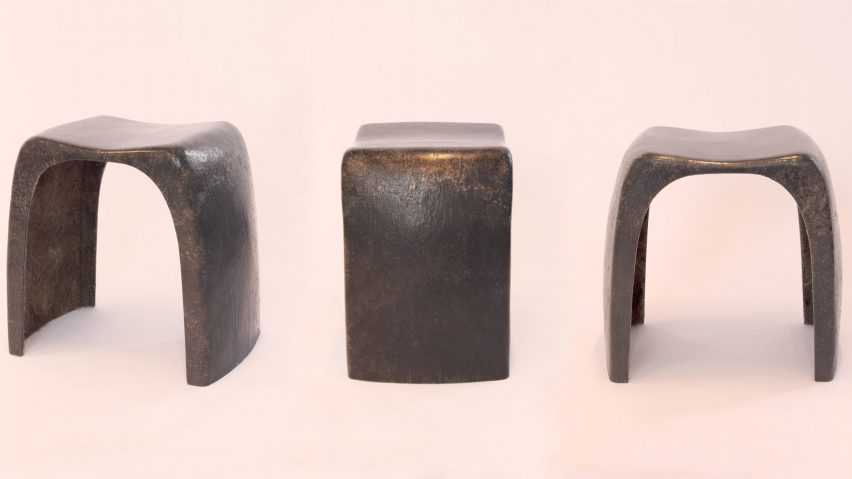Kingston School of Art graduate Oksana Bondar has created a dressing table stool from human hair to demonstrate the design possibilities of the material.
Called Wiggy, the stool is made by combining hair with Polylactic Acid (PLA) – a biodegradable plastic made from corn starch or sugar cane – to form a solid texture.
The stool's form is meant to resemble the type of traditional dressing table stools found in theatrical boudoirs.
Bondar, who studied Product Design at Kingston University, created the piece to show an alternative uses for human hair – which is commonly perceived as a waste product.
To create the stool, Bondar collected three weeks worth of hair from her local hair salon in London. It took approximately three bin bags worth of hair to make the product.
The hair was then wet in soapy water and felted together by rubbing the hair strands to form a matted cluster. This was then sealed in PLA bioplastic using a cnc-cut mould made from chipboard.
"The shape was also made to demonstrate the capabilities of the material – it can easily replace plastic injected moulds or plywood," said Bondar.
"The curves and bends are structural, they reinforce the corners of the seat and secure the legs so the stool doesn't rattle."
When making the product, Bondar followed a method of circular economy, which states that design should be restorative and regenerative as opposed to the commonly-used "take, make and dispose" industrial model.
The shape of the stool was chosen to give off the least amount of waste.
"The minimum offcuts fabrication process guides the shape of Wiggy and its narrative aspires to challenge people's perception of aesthetics of objects through their lifecycles," explained Bondar.
Bondar decided to explore alternative uses for urban waste, as she believes that Britain's withdrawal from the European Union (EU) will have a socio-economic impact on production sources.
"Brexit brought a lot of concerns for the design and manufacturing industry in the UK" Bondar told Dezeen. "Manufacturers are afraid of trade links breaking, materials won't be as easily available from the EU and import and export taxes will rise."
"All in all, there will be less access to materials, processes and a skilled workforce," she continued.
Human hair is increasingly being used by designers as an alternative to synthetic materials. Previously, Hungarian designer Krisztina Czika made cups from human hair embedded in wax, while Zsofia Kollar has used human hair to create a series of scented objects.

